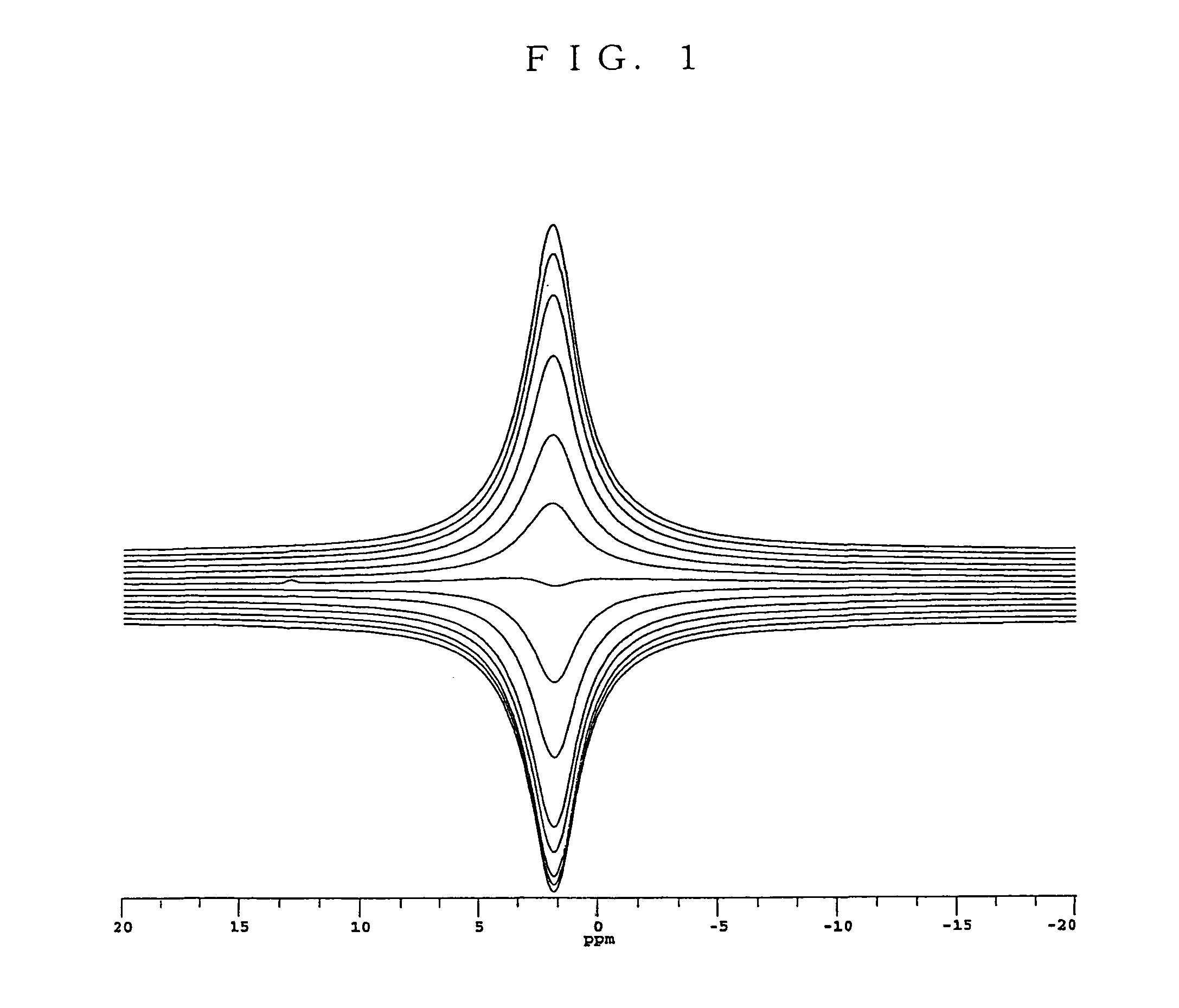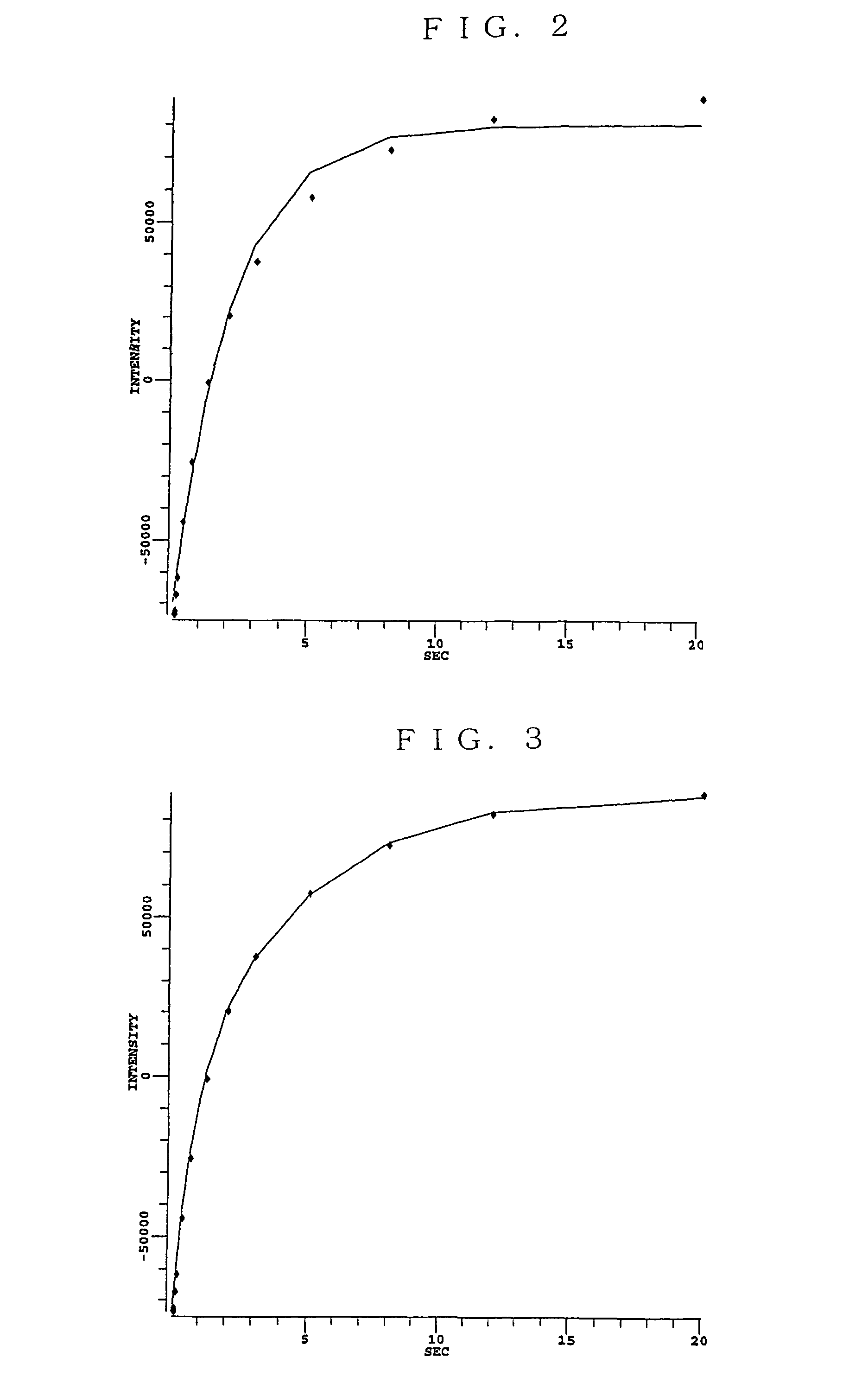Non-aqueous electrolyte battery and method of manufacturing the same
a technology of electrolyte battery and non-aqueous electrolyte, which is applied in the direction of non-aqueous electrolyte cells, cell components, sustainable manufacturing/processing, etc., can solve the problems of gas generation, poor operation characteristics at high temperature, short service life, etc., and achieve excellent service life and high template characteristics. , the effect of suppressing swelling
- Summary
- Abstract
- Description
- Claims
- Application Information
AI Technical Summary
Benefits of technology
Problems solved by technology
Method used
Image
Examples
example i
[0067]Comparative Example Batteries 1 through 4 and Example Batteries 1 through 4 as described below were prepared as non-aqueous electrolyte batteries.
example battery 1
[0075]Example Battery 1 was prepared in a same manner as Comparative Example Battery 4 except that the coating rate of the negative electrode was changed to 23 mg / cm2 (not including the collector). An “initial cycle” process was executed in a manner same as Comparative Example Battery 4 except that the charging voltage was changed to 4.1 V and the discharging capacity (battery capacity) at the third cycle was checked. The potential of the positive electrode and that of the negative electrode of this battery were respectively about 4.3 V and about 0.2 V relative to the potential of lithium of this battery at the end of the 4.1 V charging step.
example battery 2
[0076]Example Battery 2 was prepared and an “initial cycle” process was executed in a manner same as Example Battery 1. An additional cycle, or the fourth cycle, was executed in a manner same as the “initial cycle” except that a charging voltage of 2.5 V was used and the discharging capacity (battery capacity) was observed and checked. The potential of the positive electrode and that of the negative electrode of this battery were respectively about 4.0 V and about 1.5 V relative to the potential of lithium of this battery at the end of the 2.5 V charging step.
PUM
| Property | Measurement | Unit |
|---|---|---|
| BET specific surface area | aaaaa | aaaaa |
| crystallite size | aaaaa | aaaaa |
| crystallite size | aaaaa | aaaaa |
Abstract
Description
Claims
Application Information
 Login to View More
Login to View More - R&D
- Intellectual Property
- Life Sciences
- Materials
- Tech Scout
- Unparalleled Data Quality
- Higher Quality Content
- 60% Fewer Hallucinations
Browse by: Latest US Patents, China's latest patents, Technical Efficacy Thesaurus, Application Domain, Technology Topic, Popular Technical Reports.
© 2025 PatSnap. All rights reserved.Legal|Privacy policy|Modern Slavery Act Transparency Statement|Sitemap|About US| Contact US: help@patsnap.com



